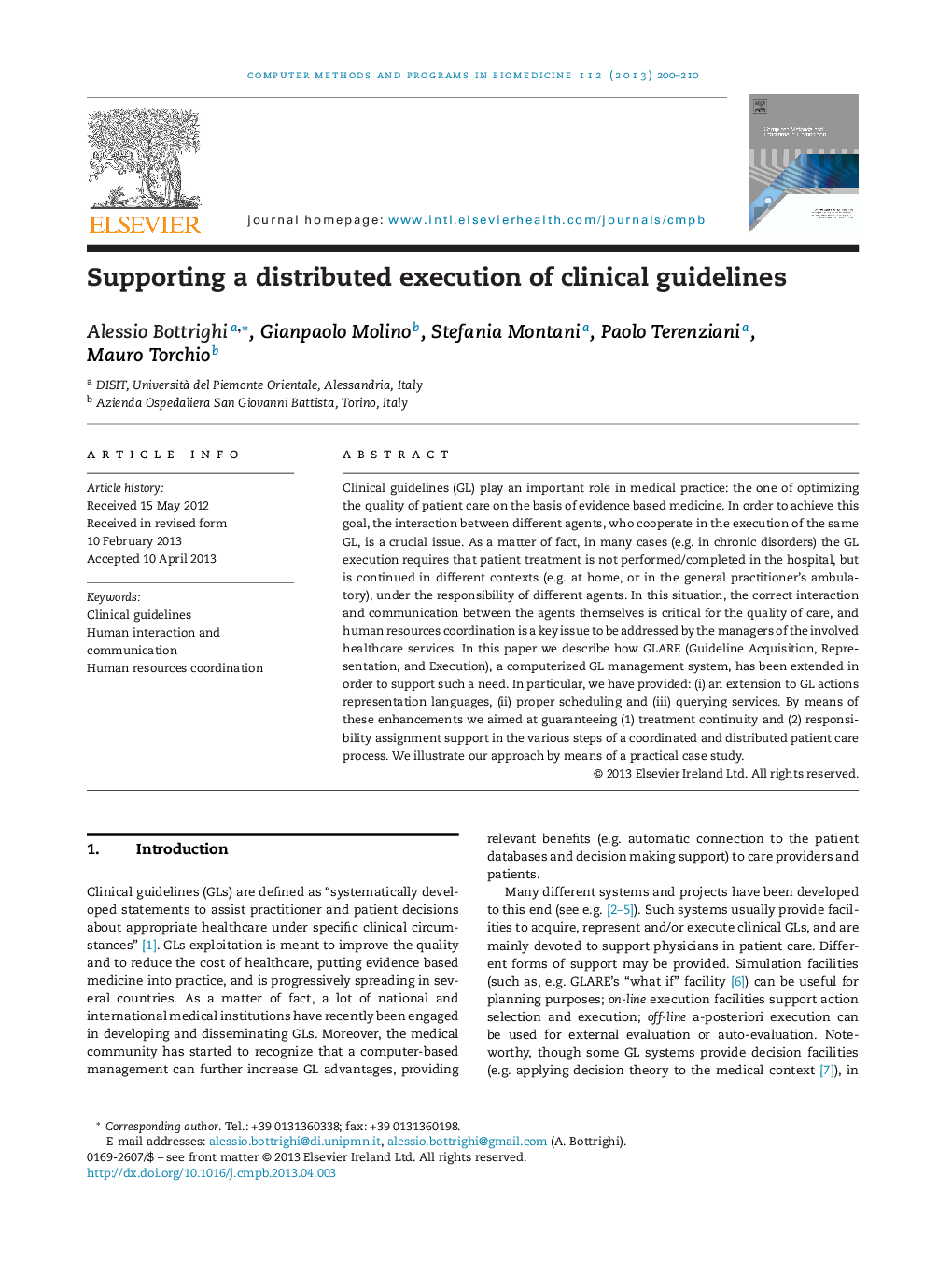| Article ID | Journal | Published Year | Pages | File Type |
|---|---|---|---|---|
| 10345571 | Computer Methods and Programs in Biomedicine | 2013 | 11 Pages |
Abstract
Clinical guidelines (GL) play an important role in medical practice: the one of optimizing the quality of patient care on the basis of evidence based medicine. In order to achieve this goal, the interaction between different agents, who cooperate in the execution of the same GL, is a crucial issue. As a matter of fact, in many cases (e.g. in chronic disorders) the GL execution requires that patient treatment is not performed/completed in the hospital, but is continued in different contexts (e.g. at home, or in the general practitioner's ambulatory), under the responsibility of different agents. In this situation, the correct interaction and communication between the agents themselves is critical for the quality of care, and human resources coordination is a key issue to be addressed by the managers of the involved healthcare services. In this paper we describe how GLARE (Guideline Acquisition, Representation, and Execution), a computerized GL management system, has been extended in order to support such a need. In particular, we have provided: (i) an extension to GL actions representation languages, (ii) proper scheduling and (iii) querying services. By means of these enhancements we aimed at guaranteeing (1) treatment continuity and (2) responsibility assignment support in the various steps of a coordinated and distributed patient care process. We illustrate our approach by means of a practical case study.
Keywords
Related Topics
Physical Sciences and Engineering
Computer Science
Computer Science (General)
Authors
Alessio Bottrighi, Gianpaolo Molino, Stefania Montani, Paolo Terenziani, Mauro Torchio,
